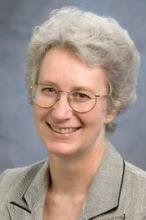Psychiatrists in direct-pay practices, in which patients must seek their own reimbursement if it is available, say the high quality of care they offer continues to bring patients through their doors from all ends of the economic spectrum.
Just 55% of U.S. psychiatrists accepted any form of insurance during 2009-2010, while nearly 90% of physicians in other specialties did during that period (JAMA Psychiatry 2014;71:176-81). Psychiatrists in cash practices say this is in part because the field is not as good a fit for managed care as other specialties are.
It is also, they say, because certain subspecialties such as addiction treatment are locked into reimbursement models that are rigid and dated; and because clinicians would rather spend time with their patients than on coding and paperwork, even if it means collecting less money or having to offer discounts to patients who find themselves in a tough spot.
“This is about value. And people will pay the money if they feel the value,” said Dr. Mark L. Willenbring of Alltyr clinic in St. Paul, Minn., a cash practice he founded.
Patient advocates are concerned that cash practices create further impediments to access in a mental health care system, that – parity laws and sweeping insurance reforms aside – still suffers from a shortage of providers and high rates of insurance denials for mental health and substance use treatment.
“We can certainly empathize with the rationale for providers doing only direct pay; we just wish it were not so,” said Sita Diehl, director of state policy and advocacy for the Arlington, Va.–based National Alliance on Mental Illness. NAMI’s recent report on parity in mental health care, titled “A Long Road Ahead,” found the dearth of providers accepting insurance to be among the persistent obstacles to access.
A novel addiction model
Dr. Willenbring, a former director of addiction and recovery research at the National Institutes of Health, said his move to a direct-pay clinic came about as a result of what he considered a lack of science-based addiction medicine.
“Research in addictions is astonishing, and there’s lots more we know about the disorders than 50 years ago, but a lot of it sits on the shelf because we don’t have the vehicle to get it to the public,” he said. His Alltyr clinic, now in its third year, began as a demonstration model combining outpatient medical management and psychotherapy to people with alcohol and substance use disorders at varying stages of severity.
“Insurance companies have boxes they want to put you in. They have a box for substance use treatment that says ‘rehab.’ And they have a box for a mental health clinic. But what I’m doing is neither. And I’m a subspecialist; I don’t want to be paid the same as they guy down the street doing 5-minute med checks. Finally, with insurance, I couldn’t do what I want to do. I couldn’t experiment.”
Dr. Willenbring said direct pay has allowed him to build an addiction treatment model that is an alternative to traditional rehabilitation. “What’s the treatment for bipolar disorder? You put the patient through ‘the program’? No, you try one thing, and if it doesn’t work you try something else. And you don’t blame the patient if it doesn’t work.”
Direct pay helps keep his costs to patients and bureaucracy to a minimum, he said. He charges $495 for a 90-minute initial evaluation, with fees between $95 for 45 minutes with a licensed addiction counselor to $300 with a psychiatrist. “You have to remember: Many of our patients have spent tens of thousands of dollars before coming here,” usually on rehab, he said. Most spend between $2,000 and $3,000 a year at the clinic, less than the $5,000 annual cash outlay required by many high-deductible insurance plans.
Also, he said, “I negotiate with patients. I ask what they can afford. I’m seeing one patient for $50 a visit because that’s what they can pay.”
The Alltyr clinic collects outcome data that helps him to better understand which approaches are working, he said. “My goal is to demonstrate that we can have better outcomes and far better patient satisfaction at substantially less cost than current treatment,” and direct pay is making the effort possible, for now, Dr. Willenbring said.
On an absolute level, his practice is not more costly than under a managed-care model, he added. “I also work part time for one of the large health organizations in a half-day clinic. They take all insurance, but if patients have to pay cash they pay more there than in my clinic.”



